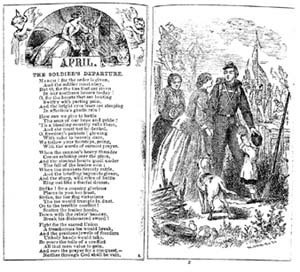What Can You Do With An Americana Collection?

What Can You Do With An Americana Collection?
The third part of the exhibition is entitled “The Mystery Book Exercise” and despite the title Agatha Christie plays no part in this exercise. Rather, according to Taraba:
Each student is assigned a book to size up quickly, using the "Questions to Consider" handout to help guide the examination of the book. After about seven minutes of looking at the book and answering as many questions as possible, each student reports briefly to the whole class about his or her book and how it might be used in course-related research. The purpose of the assignment is to help students gain facility with understanding a primary source in its own context: to begin to analyze the intended audience and publisher's and author's purposes in creating the book. They learn to look carefully at all aspects of how a particular book can inform research in a variety of ways beyond the text.” (from Part Three, textual introduction).
Patricia Hill, Associate Professor of History, comments at greater length on this exercise just below Taraba’s introduction to it:
The university archivist's famous mystery book exercise allows students to sample materials related to the seminar's specific topic. It teaches students to appreciate and analyze books as material objects as well as texts. In our digital age students tend to privilege words and ignore the economic and aesthetic dimensions of print culture. Turning the pages of a book produced and handled a century or two ago lets students literally touch the past. They can imagine what it was like to first heft a particular volume and encounter its content. The binding and price can indicate the publisher's target audience. Inscriptions, marginalia, illustrations, publishers' ads bound with the text, all become part of the data to be interpreted by the historian. When my students in The Politics of Sentiment encounter sentimental novels in their original bindings their grasp of the culture of sentiment as an expression of a bourgeois material and aesthetic world is enhanced. When they turn the pages of a rare run of a newspaper published by a utopian community in Indiana in the 1840s, students of Nineteenth-Century Utopias understand in a new way the means by which particular utopian ideologies were disseminated. The rhetorical strategies used in editorials and articles can be examined together with the accompanying ads for community-produced goods. These forays into the archives have encouraged several students in each seminar group to return on their own to experience the pleasures of being working historians. There is no better introduction to the craft of history. (ibid.)
Again, as in all the parts of this exhibition, site visitors can view some of the primary source materials used in either a close-up of a quasi-thumbnail rendition, which range from a Lady’s Almanac of 1862 to a 1903 newspaper called the Cherokee Advocate; they can also click on a link to see the actual list of questions given to students to answer using their rare book or manuscript.